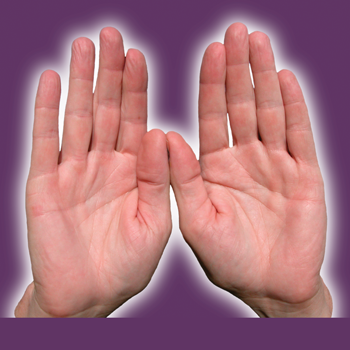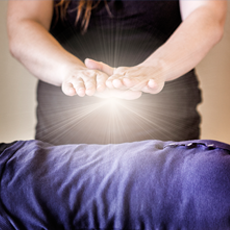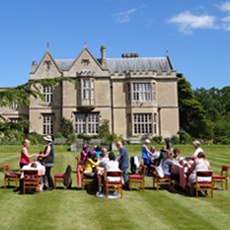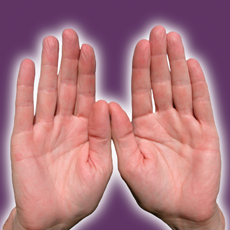by Judi Broyles
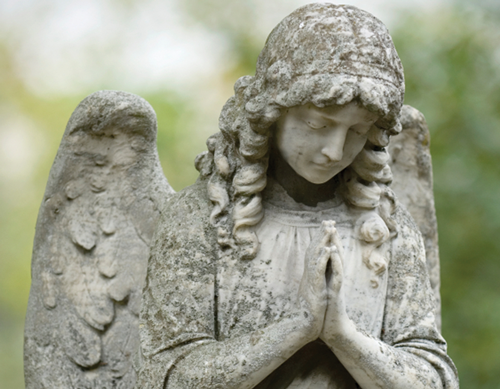 Never has the power of Reiki been more apparent than when I have used it in situations of dire need. I am a hospice volunteer with Pathways in Sunnyvale, California, and I use Reiki with the patients assigned to me. Since Reiki always heals, even if it does not cure the physical body, it can help a patient to heal spiritually and emotionally to ease the pathway of transition. I have seen Reiki relieve severe pain on more than one occasion. I have seen the tremors of Parkinson’s disease cease for a while. I have witnessed a woman whose restricted ability to breathe and swallow eased with Reiki’s energy.
Never has the power of Reiki been more apparent than when I have used it in situations of dire need. I am a hospice volunteer with Pathways in Sunnyvale, California, and I use Reiki with the patients assigned to me. Since Reiki always heals, even if it does not cure the physical body, it can help a patient to heal spiritually and emotionally to ease the pathway of transition. I have seen Reiki relieve severe pain on more than one occasion. I have seen the tremors of Parkinson’s disease cease for a while. I have witnessed a woman whose restricted ability to breathe and swallow eased with Reiki’s energy.
Working with patients in hospice presents some challenges. First, they are usually in a hospital bed and not on a massage table. That can be a challenge in itself. Often the hospital bed is pushed up against a wall, so giving Reiki is very different than being able to move and walk around a table. Other things to look out for are tubes, wires and other connections. If the person is not in a hospital bed, another approach is necessary. On one occasion, I took off my shoes and climbed up on the bed because the patient was propped up in a sitting position on the side of the bed with her legs off the bed and on a stool. I have learned to expect the unexpected. And thank God that Reiki goes to where Reiki is needed. I even considered sending distant Reiki to this patient, although I was in the same room.(1)
Using Reiki with the dying requires being acutely aware of their body and how they are using Reiki and also being aware of my body, especially my crown chakra and hands, for these are my tools and tell me what I need to know to be a good practitioner. I must also listen to my intuitive powers. My “Third Eye” plays an important role in letting me know where to place my hands for “The Greater Good.”
My very first hospice patient was a 38-year-old man with brain cancer. My Reiki Master, Donna Shaffer, was treating him, and she offered to let me go along. I soon learned that there is much to know about treating a dying patient with Reiki.
A dying patient uses Reiki energy in ways that a reasonably healthy patient does not. This energy can be more spiritual in nature and feels very gentle. It might be very intense when it is being used to relieve pain. It can be unbelievably strong as the patient’s will to live drinks it in with the great thirst of a person in the desert. It may change from one kind of energy to another from day to day or during the same session.
Once, as I was working on his heart chakra, I saw something so beautiful that I started to cry. I saw a perfect sphere with a center of glowing crystal quartz. The sphere was surrounded by a magnificent blue field that turned to lavender at the outer edge, which was surrounded by sparkling prisms of more crystals. Donna asked me if I was all right. I told her I was but that I had just seen the most beautiful thing I had ever seen in my life. Donna told me that my description sounded as though I had seen his soul.
I remember very well one occasion shortly before this young man surrendered his desire for life. Donna was working at his feet and I was at his head. She stepped out into the hall and was fanning herself to cool off. My hands, face, and whole body grew hotter and hotter until I didn’t think I could stand any more. Fortunately, Donna noticed and quietly told me to go put my hands under cold running water. After a while I was able to return. The last time we saw him, his energy had changed, and this time Reiki was very gentle and quiet. He died two days later. He was a wonderful young man.
My first assignment with Pathways was a 94-year-old woman. She had such a bad case of COPD (Chronic Obstructive Pulmonary Disease) that her doctor gave her less than six months to live and put her into hospice care. She didn’t know what Reiki was but decided to give it a try. During my first visit I spent 30 minutes trying to explain Reiki. Since I was a new practitioner, I stumbled and mumbled, and finally said, “Let me show you.” During her first treatment she told me that when I put my hands on her left foot, she felt a shock of energy in her left wrist, which she had broken several years before. On another day she saw colors.
After three months she was discharged from hospice. Laughing, she told me that during an elevator ride to her floor (she lived in a residential care facility) a woman told her that she was the talk of the town. She asked what that meant and was told, “You were on hospice and you got better!” All the residents are talking about it! I saw her privately for a while, and she is now back on hospice and once again getting well. I helped her celebrate her 95 th birthday. The less than six months to live is now a week or two shy of one year, with her 96th birthday in sight.
When Parkinson’s affects a person’s ability to breathe easily or to swallow comfortably, the result can be very frightening. I cannot imagine the feeling of constantly being suffocated and being hungry, but not being able to eat because of the inability to swallow. As I gave her Reiki, she began to breathe more easily. Her husband was astonished to see her diaphragm move up and down with each breath. He told me that he hadn’t seen her do that for a long time. When I left he had taken her to their room to rest. She was in Reiki land. I only saw this woman a few times, but the results I witnessed were amazing.
I discovered that Reiki can be extremely effective for patients with Alzheimer's. When I first began seeing an 87-year-old woman who was afflicted with this disease, she would become agitated easily and didn’t know who I was or what Reiki was, even though I had seen her before. She would say, “Do I know you?” “Reiki, I don’t know Reiki.” It became, “Oh, you’re the Reiki lady. I really like Reiki.” This woman also had Parkinson's disease with a tremor in her right hand. The first time I gave her Reiki, she started to relax, and I wondered if Reiki could stop the tremor, so I put my hands on her hand. Never would I have believed that the tremors of Parkinson’s disease could become still if I hadn’t seen it for myself. I had been told that these tremors are continuous all day, every day—even during sleep. By the end of the treatment she would be sound asleep, so I don't know how long the effect of Reiki would last, but her caregiver was constantly amazed by the change she saw. Her daughter, who is a psychologist, called to thank me. She said that Reiki had made an amazing change in her mother. She also told me that she thought her mother was nearing the end.
Treating a 62-year-old woman with multiple cancers revealed how powerful Reiki can be. She did not want any pain medication because it made her feel groggy and nauseous. The first time I saw her she was writhing in pain. I gave her Reiki and she was asleep by the time I was finished. I am told that she slept for six uninterrupted hours of much-needed rest and that it had been days since she had really slept because of the pain. I started seeing her daily because Reiki had now become her morphine. She would toss and turn trying to find a position that would give her comfort, but it wasn’t until I asked Reiki to connect me to her, to use me as a channel for its healing energy, and then place my hands on her, that she would start to relax. I would look at her face from time to time, and I could see the pain leave. I could also feel her body relax and soften as the pain was lifted.
Every day her family would anxiously wait for my arrival so that their mother could be free of pain and able to rest. She would smile when I entered her room because she knew that Reiki’s healing energy would soon be hers. The last time I saw her she was actively transitioning, and I gave her Reiki one last time. She seemed to be very peaceful when I left.
I wish the world could have shared his smile when I told a gentleman with pancreatic cancer that I would be returning every week to give him Reiki. He told me that during his first session he felt an electric current in his abdomen when my hands were there. He was sleeping when I left. The second time he had Reiki he slept for a long time. I gave his wife a Reiki treatment because, as his primary caregiver, she also needed support. He awoke before I left and told me that he felt like he was floating on a cloud. I gave him Reiki just before he died. His wife wanted him to float away on a cloud. As I see energy as colors, I saw brilliant blue for peace, lavender for love, and magenta for spirituality. It meant a lot to his family to know that he was comfortable with his transition.
All of these patients have helped me to grow as a person. It is an honor to share this spiritual time of their lives with them. They have changed my life. I have learned how to really “be there” for a person during this special time in their lives. More importantly, I want to “be there” for them. I have been given the gift of becoming a compassionate person. Frequently I am asked, “Isn’t seeing dying people depressing?” My answer is always the same: “No, because I know that I have something special to offer. I offer Reiki.”
Reiki is a gift that has been given to me. Reiki really is a gift because in a gentle, non-invasive way, I can bring comfort to those who are in transition. No amount of money can do what Reiki can do.
This article appears in the Summer 2009 issue of the Reiki News Magazine.
1 Editor’s note: In situations such as these, it may be helpful to use Beaming. Sit at a comfortable distance from the client, allow Reiki to flow, and direct your hands to a specific area or to the entire body.


